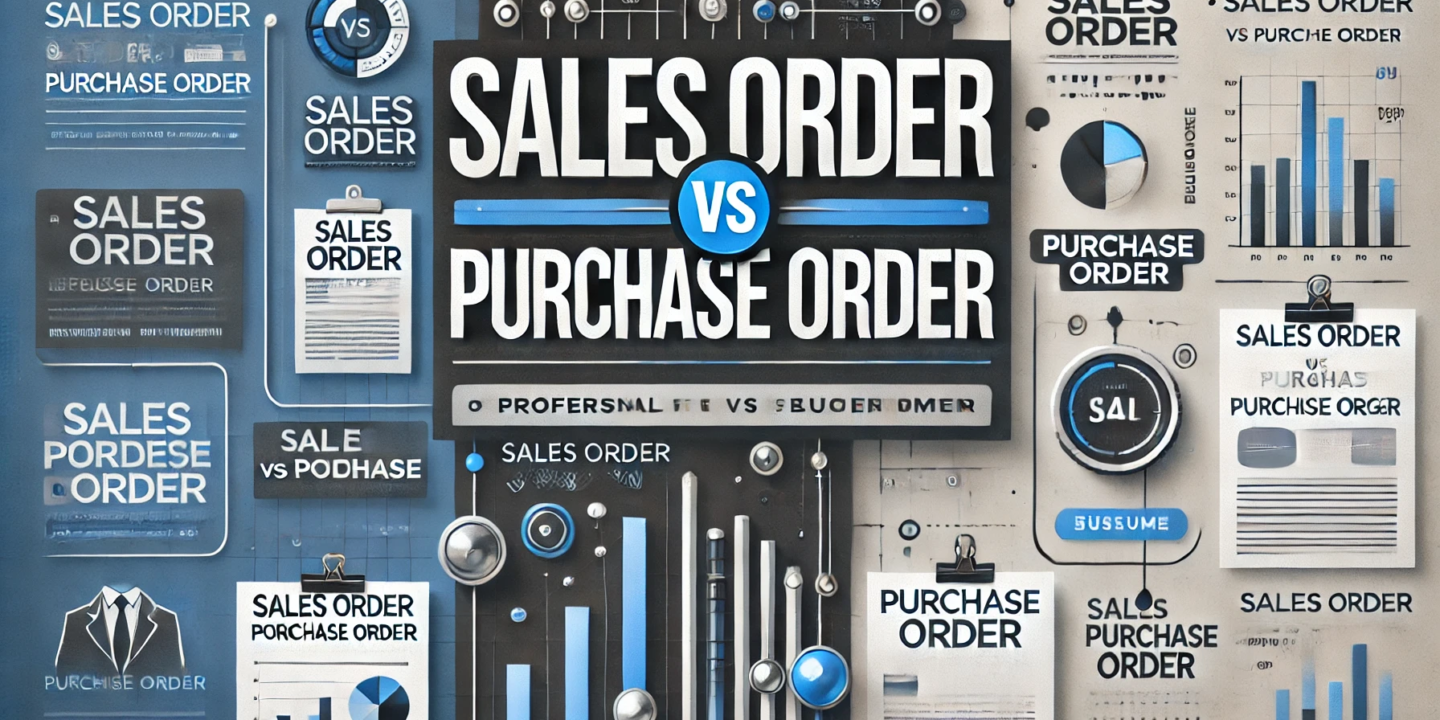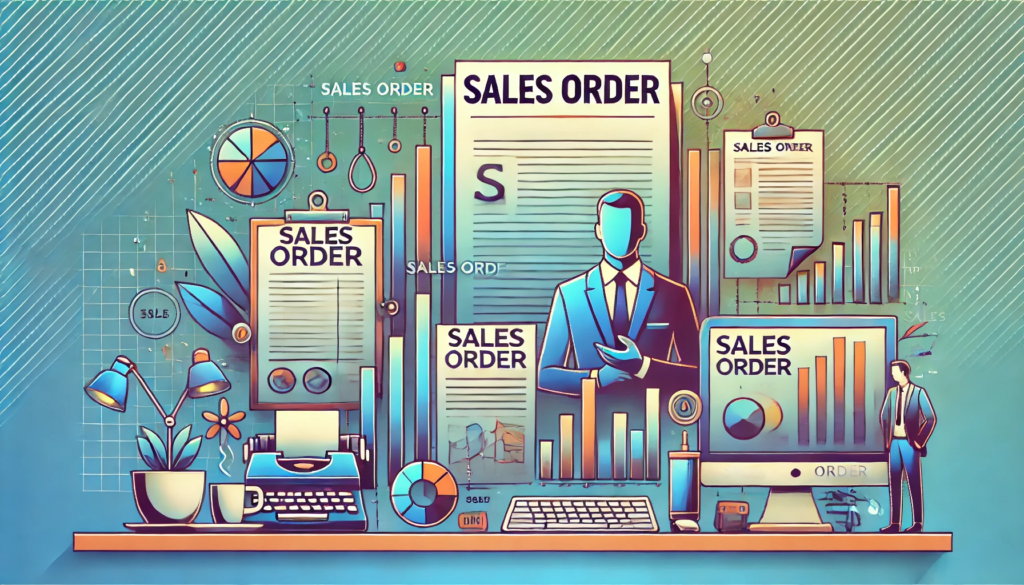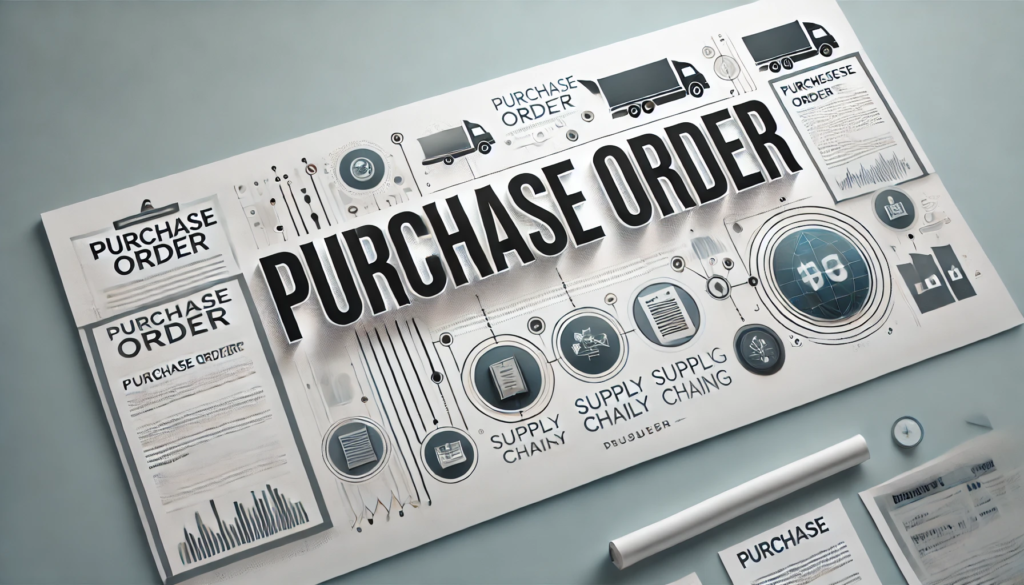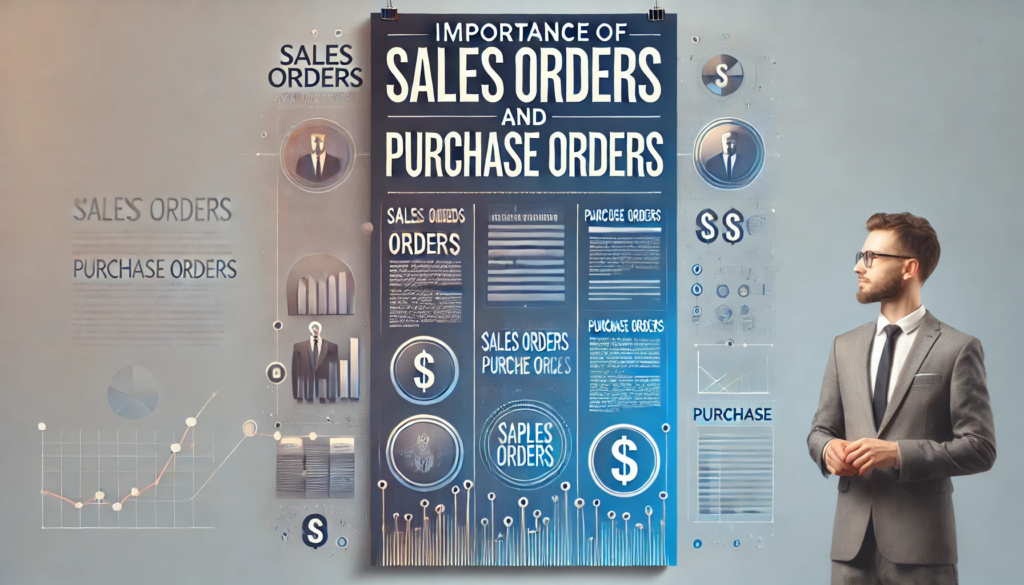
In the realm of business operations, particularly within supply chain management and procurement, two critical documents often come into play: the sales order and the purchase order. Though they might seem similar at a glance, they serve distinct purposes and are essential for ensuring smooth transactions between buyers and sellers. This blog delves into the specifics of “Sales Order vs Purchase Order,” their respective roles, and why they are indispensable in business processes.
What is a Sales Order?

A sales order is a document generated by the seller in response to a purchase order or a customer’s request to buy goods or services. It confirms the sale and outlines the details of the transaction from the seller’s perspective. The sales order is issued after the purchase order has been received and accepted.
Key Components of a Sales Order
- Seller and Buyer Information: Names, addresses, and contact details of both parties.
- Sales Order Number: A unique identifier for tracking and reference.
- Item Description: Detailed description of the products or services being sold.
- Quantity: The number of items or amount of services being provided.
- Price: Unit price and total cost, including any applicable taxes and discounts.
- Delivery Date: The confirmed date of delivery.
- Payment Terms: Agreed-upon conditions regarding payment.
- Shipping Details: Instructions for shipping, including address and preferred carriers.
- Terms and Conditions: Additional terms governing the transaction.
Purpose of a Sales Order
- Order Confirmation: Confirms the details of the sale to both the buyer and the seller.
- Inventory Management: Helps manage stock levels and plan production.
- Revenue Tracking: Assists in tracking sales and forecasting revenue.
- Customer Relationship Management: Enhances customer service by ensuring accuracy and reliability in fulfilling orders.
What is a Purchase Order?

A purchase order is a document issued by a buyer to a seller indicating the intent to purchase goods or services. It outlines the specific items or services required, the quantity, price, delivery date, and other pertinent terms and conditions. Essentially, a purchase order serves as a formal request and a contractual agreement between the buyer and the seller.
Key Components of a Purchase Order
- Buyer and Seller Information: Names, addresses, and contact details of both parties.
- Purchase Order Number: A unique identifier for tracking and reference.
- Item Description: Detailed description of the products or services being purchased.
- Quantity: The number of items or amount of services required.
- Price: Unit price and total cost.
- Delivery Date: The expected date of delivery.
- Payment Terms: Conditions regarding payment, such as due dates and methods.
- Shipping Details: Instructions for shipping, including address and preferred carriers.
- Terms and Conditions: Additional terms governing the transaction.
Purpose of a Purchase Order
- Clear Communication: A purchase order ensures that both parties have a clear understanding of what is being purchased, reducing the risk of miscommunication and disputes.
- Legal Protection: It serves as a legally binding document that can be used to resolve conflicts if they arise.
- Financial Control: Helps in budgeting and managing expenses by tracking commitments.
- Inventory Management: Assists in planning and managing inventory levels.
Sales Order vs Purchase Order: 11 Key Differences
- Origin and Issuance
- Sales Order: Issued by the seller in response to the purchase order or customer request.
- Purchase Order: Issued by the buyer to request goods or services from the seller.
- Purpose
- Sales Order: Confirms the sale and provides the seller’s perspective on the transaction.
- Purchase Order: Serves as a formal request and a binding agreement for the purchase of goods or services.
- Document Lifecycle
- Sales Order: Comes after the purchase order and confirms the details of the sale.
- Purchase Order: Initiates the procurement process and is the first step in the transaction.
- Content Focus
- Sales Order: Focuses on the seller’s commitment to fulfill the order, including delivery dates and payment terms.
- Purchase Order: Focuses on the buyer’s requirements, including specific items, quantities, and prices.
- Approval Process
- Sales Order: Typically does not require approval from the buyer’s side but may require internal approval from the seller’s side depending on the organization’s policies.
- Purchase Order: Often requires approval from various departments within the buyer’s organization before being sent to the seller.
- Tracking and Management
- Sales Order: Used by the seller to manage inventory, production schedules, and delivery timelines.
- Purchase Order: Used by the buyer to track expenditures, manage budgets, and ensure that all requested goods/services are received as ordered.
- Financial Impact
- Sales Order: Represents anticipated revenue for the seller and can impact sales forecasts and financial planning.
- Purchase Order: Represents a commitment of funds by the buyer and can impact budget forecasts and financial planning.
- Communication Flow
- Sales Order: Communicates the seller’s confirmation and details of the order back to the buyer.
- Purchase Order: Communicates the buyer’s initial request and requirements to the seller.
- Implementation and Execution
- Sales Order: Drives the seller’s execution process, including picking, packing, shipping, and invoicing.
- Purchase Order: Drives the buyer’s procurement process, including order placement, receiving, and payment authorization.
- Modification and Changes
- Sales Order: Changes to a sales order may require negotiation and agreement between both parties and may involve issuing a revised sales order.
- Purchase Order: Changes to a purchase order, such as quantity or specifications, may need re-approval and can result in the issuance of a revised purchase order.
- Payment Terms
- Sales Order: Specifies the payment terms agreed upon by both parties, such as net 30, net 60, etc.
- Purchase Order: May include preferred payment terms from the buyer’s perspective, which need to be agreed upon by the seller.
The Importance of Both Documents in Business Operations

- Ensuring Accuracy and Accountability
Both sales orders and purchase orders play crucial roles in ensuring accuracy and accountability in business transactions. They provide detailed records of the terms agreed upon by both parties, reducing the risk of errors and misunderstandings.
- Streamlining Supply Chain Management
In supply chain management, having well-documented sales orders and purchase orders helps streamline operations. Purchase orders help manage inventory levels by ensuring that goods are ordered in the right quantities and at the right time. Sales orders help track incoming revenue and manage production schedules.
- Enhancing Financial Management
From a financial perspective, these documents are essential for budgeting and financial planning. Purchase orders help control spending by providing a clear record of commitments. Sales orders help track revenue and manage cash flow.
- Legal Protection
In the event of a dispute, both sales orders and purchase orders serve as legal documents that can be used to resolve conflicts. They provide clear evidence of the terms agreed upon by both parties, which can be crucial in legal proceedings.
- Improving Customer Relationships
Accurate and timely sales orders contribute to better customer relationships. They ensure that customers receive the correct products or services on time, which enhances customer satisfaction and loyalty.
Best Practices for Managing Sales Orders and Purchase Orders

- Automation and Technology
Leveraging technology to automate the creation, tracking, and management of sales orders and purchase orders can significantly improve efficiency. Many modern ERP (Enterprise Resource Planning) systems offer modules specifically designed for handling these documents.
- Standardization
Standardizing the format and process for creating sales orders and purchase orders can help ensure consistency and reduce errors. Using templates and predefined workflows can streamline the process and make it more efficient.
- Training and Education
Providing training for employees on the importance of these documents and how to handle them correctly can help ensure that they are used effectively. Understanding their role in the business process can lead to better compliance and fewer mistakes.
- Regular Audits
Conducting regular audits of purchase orders and sales orders can help identify any discrepancies or areas for improvement. This can ensure that both documents are being used correctly and that they accurately reflect the terms of the transactions.
Conclusion
In conclusion, sales orders and purchase orders are fundamental documents in business operations, each serving distinct but complementary roles. While the purchase order initiates the procurement process from the buyer’s side, the sales order confirms the transaction from the seller’s side. Understanding the differences between these documents and their importance can help businesses improve accuracy, efficiency, and accountability in their transactions. By implementing best practices for managing these documents, businesses can streamline their operations, enhance financial management, and foster better customer relationships.








No Comments